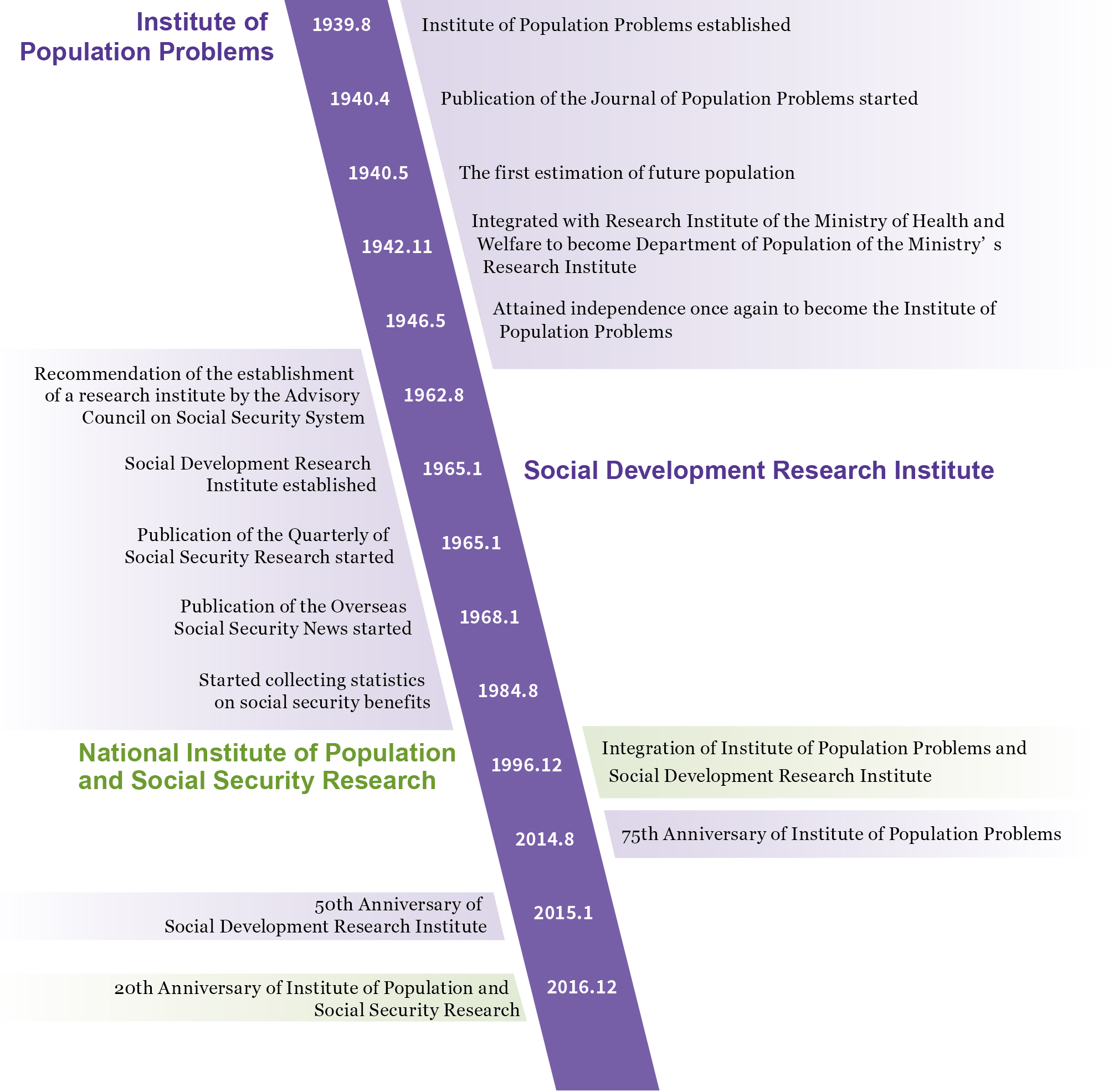
Before World War II, the concern for overpopulation grew due to the food shortage and unemployment, and population problems drew wide public attention in view of securing human resources. Consequently, in August 1939, the Institute of Population Problems was established. It was the first national research institute in the world that focused on population issues. After World War II, a decline in fertility rates and the aging of the population became evident as the economy developed, and the importance of systems and policies to cope with these issues became apparent. Moreover, social security in Japan progressed steadily and the universal coverage of public pension and health insurance was achieved by the mid-1960s. However, basic as well as comprehensive research systems to study social security had yet to be organized. In January 1965, the Social Development Research Institute was established under the recommendation of Advisory Council on Social Security System. Continuous trends of low fertility, aging, and slowdown in economic growth have brought the relationship between population and social security closer. As such, there arose a growing need to understand the interaction between the two fields. On the other hand, during this period, the reorganization of research institutions under the Ministry of Health and Welfare was requested in the context of government reform to better cope with the evolving situation of Japanese society. In December 1996, the Institute of Population and Social Security Research was created by integrating two institutes - the Institute of Population Problems and the Social Development Research Institute. August 2014 marked the 75th anniversary of the Institute of Population Problems, January 2015 marked the 50th anniversary of the Social Development Research Institute, and December 2016 marked the 20th anniversary of the Institute of Population and Social Security Research. |



